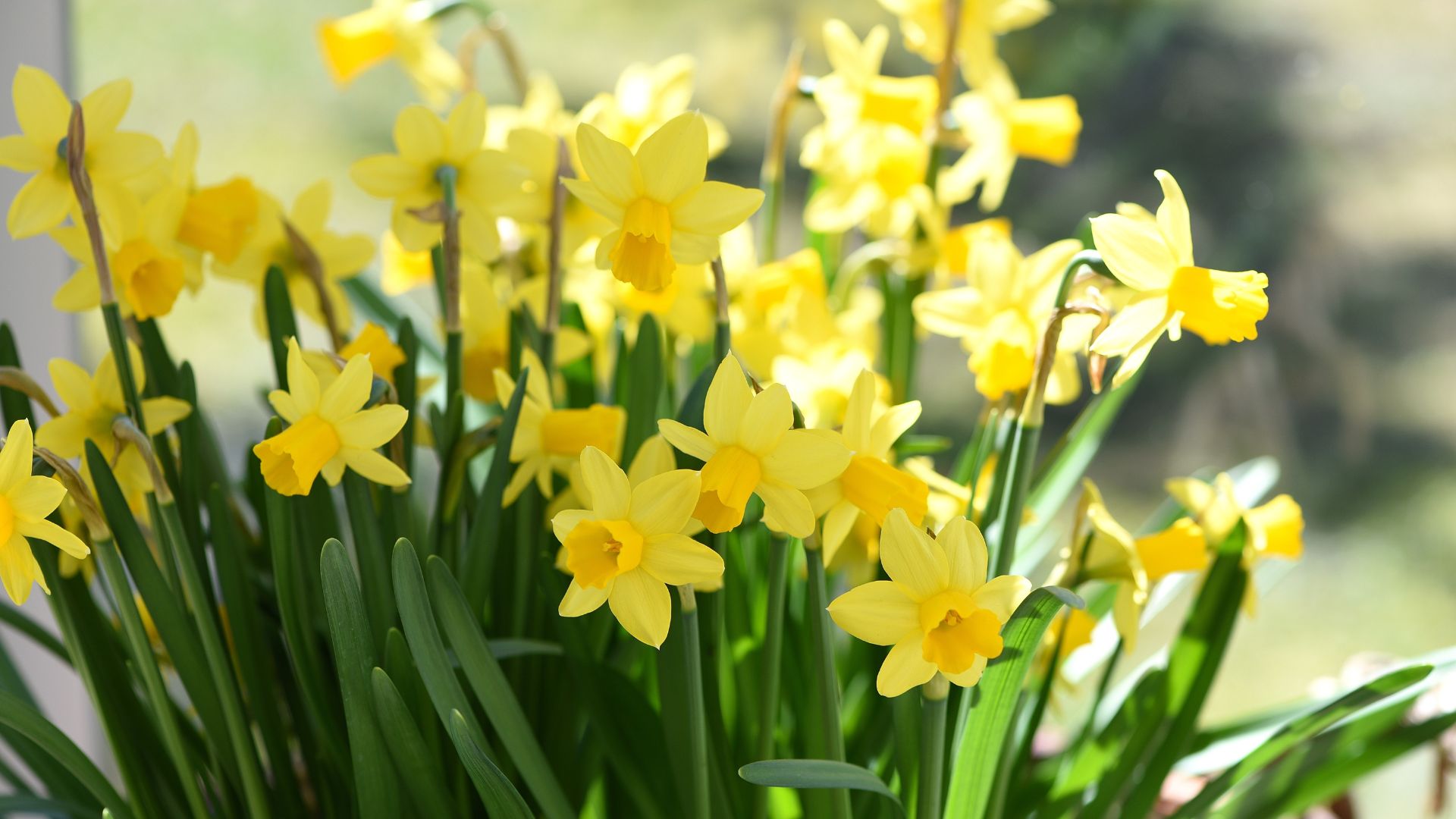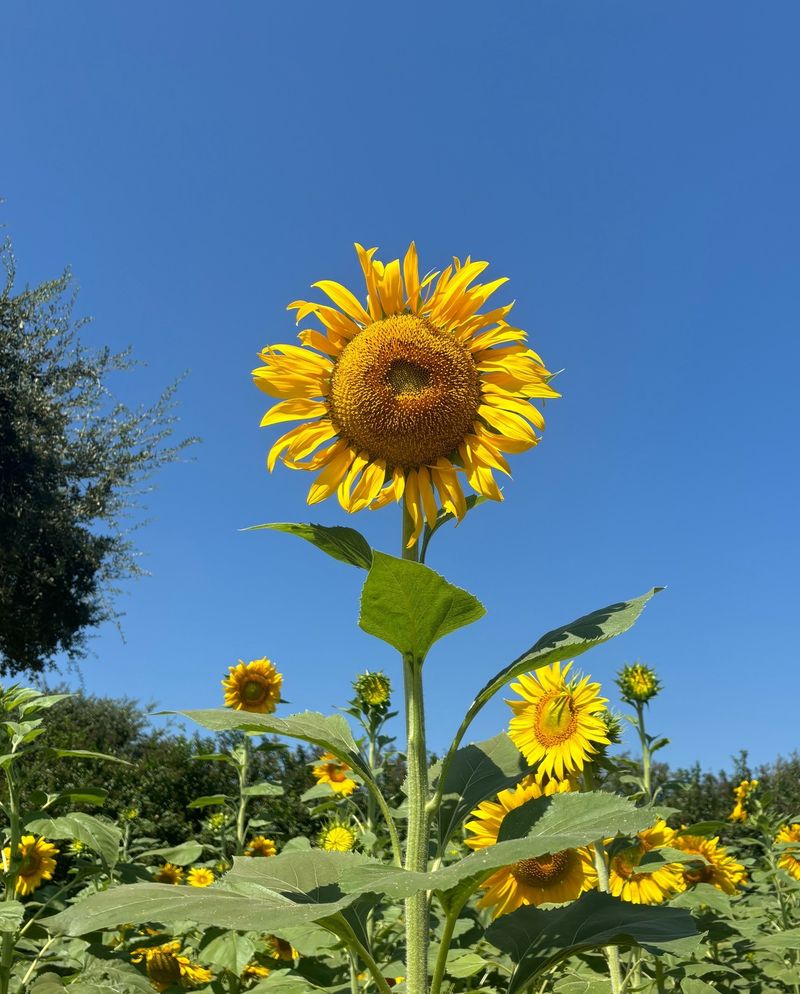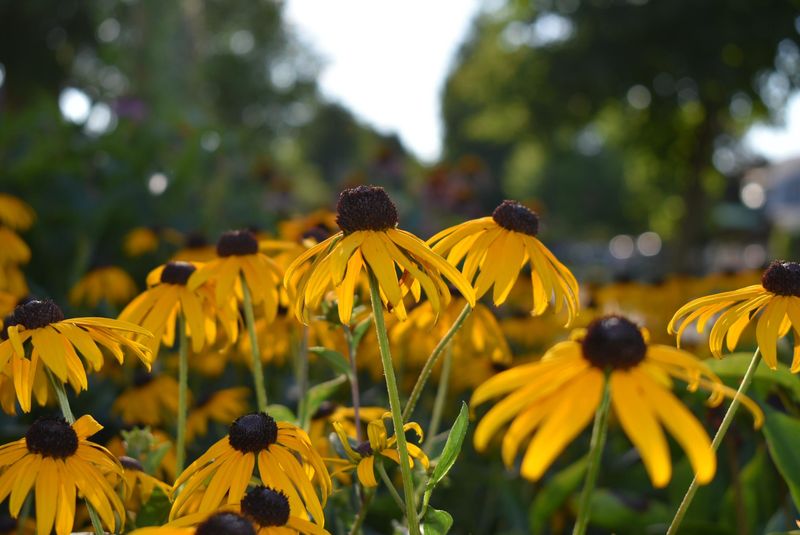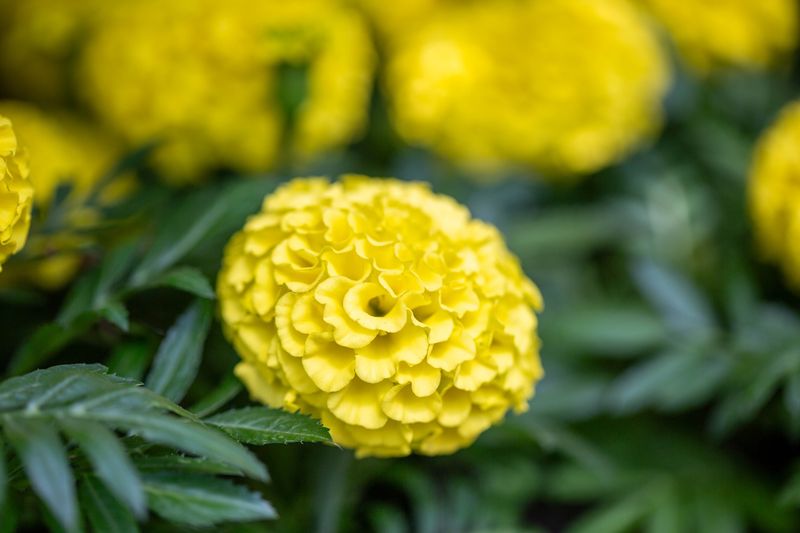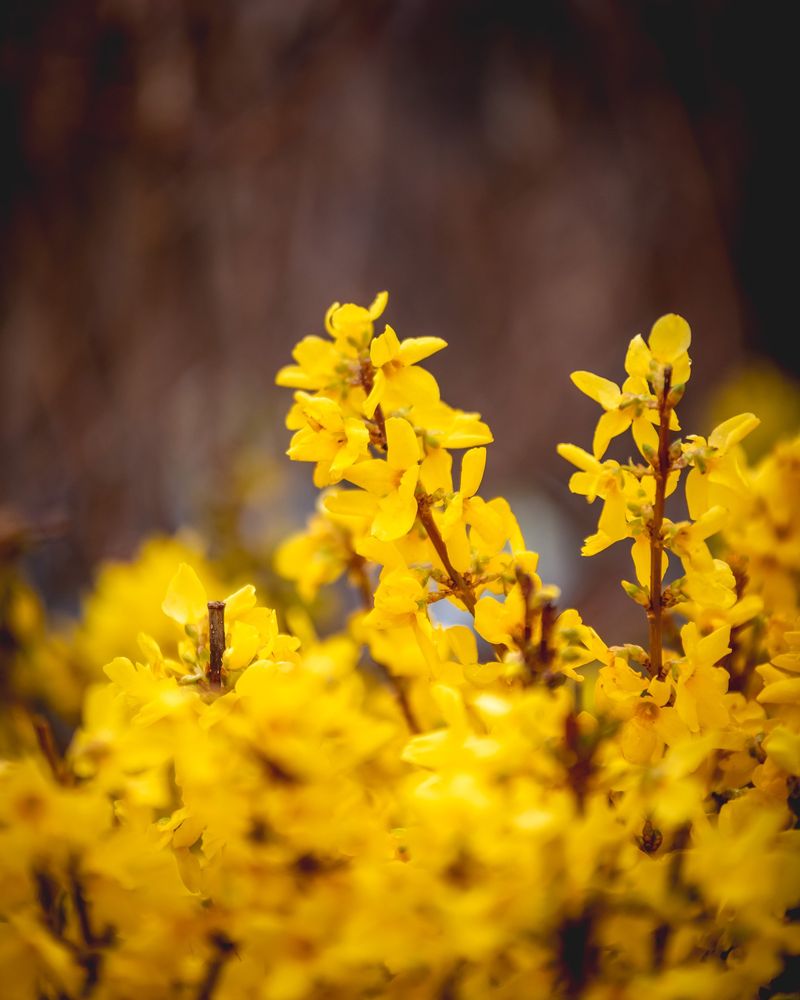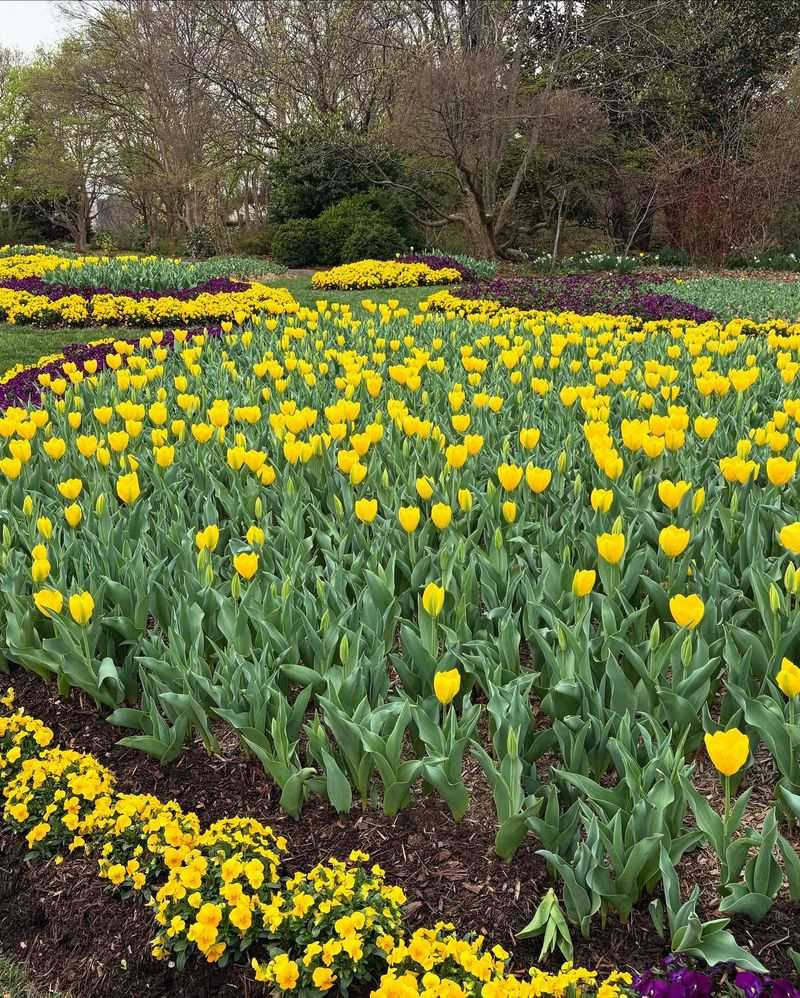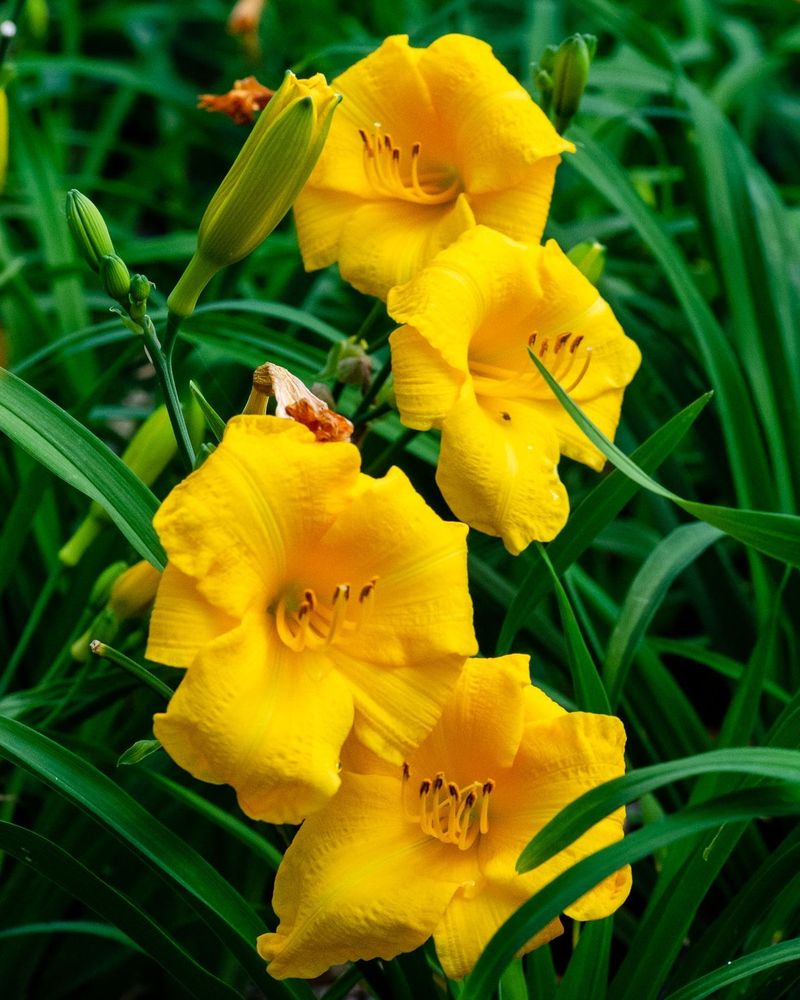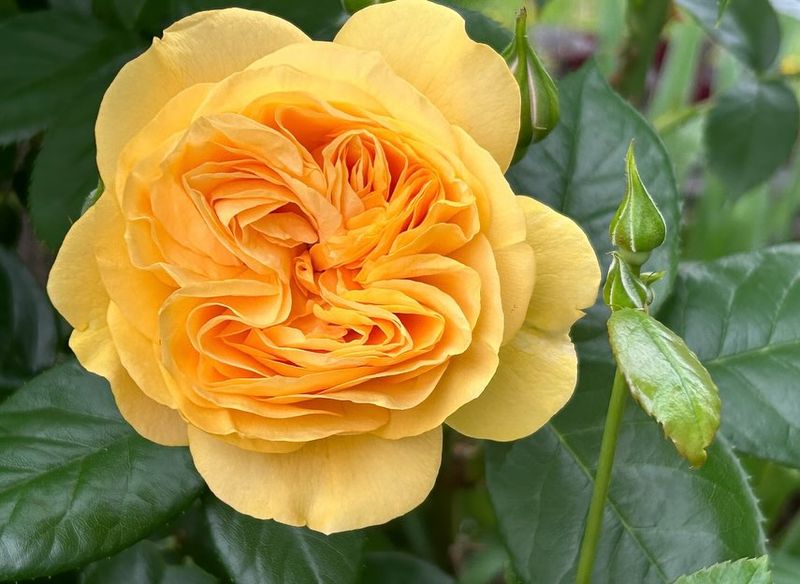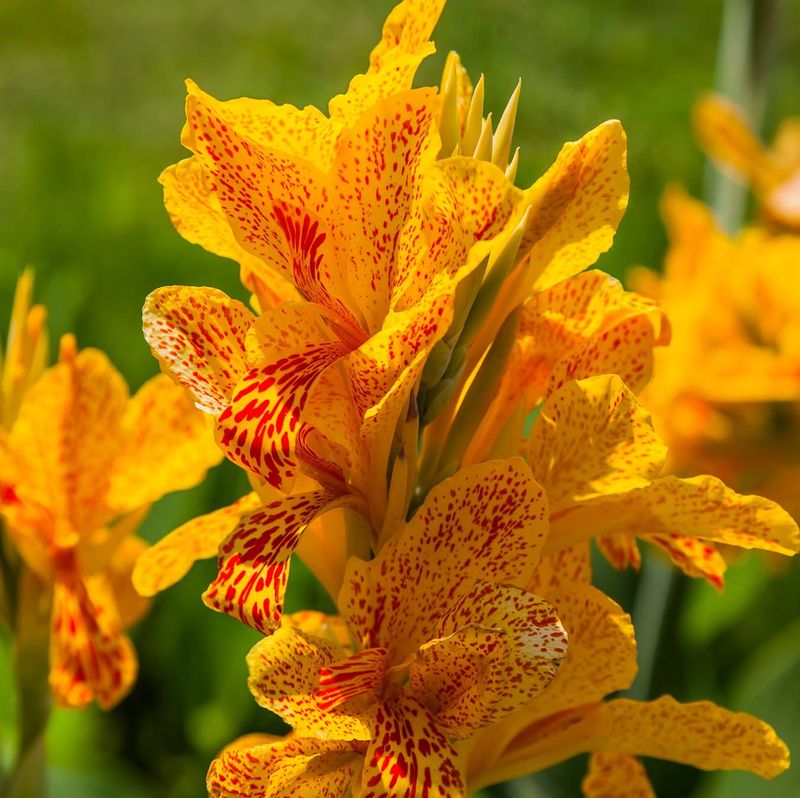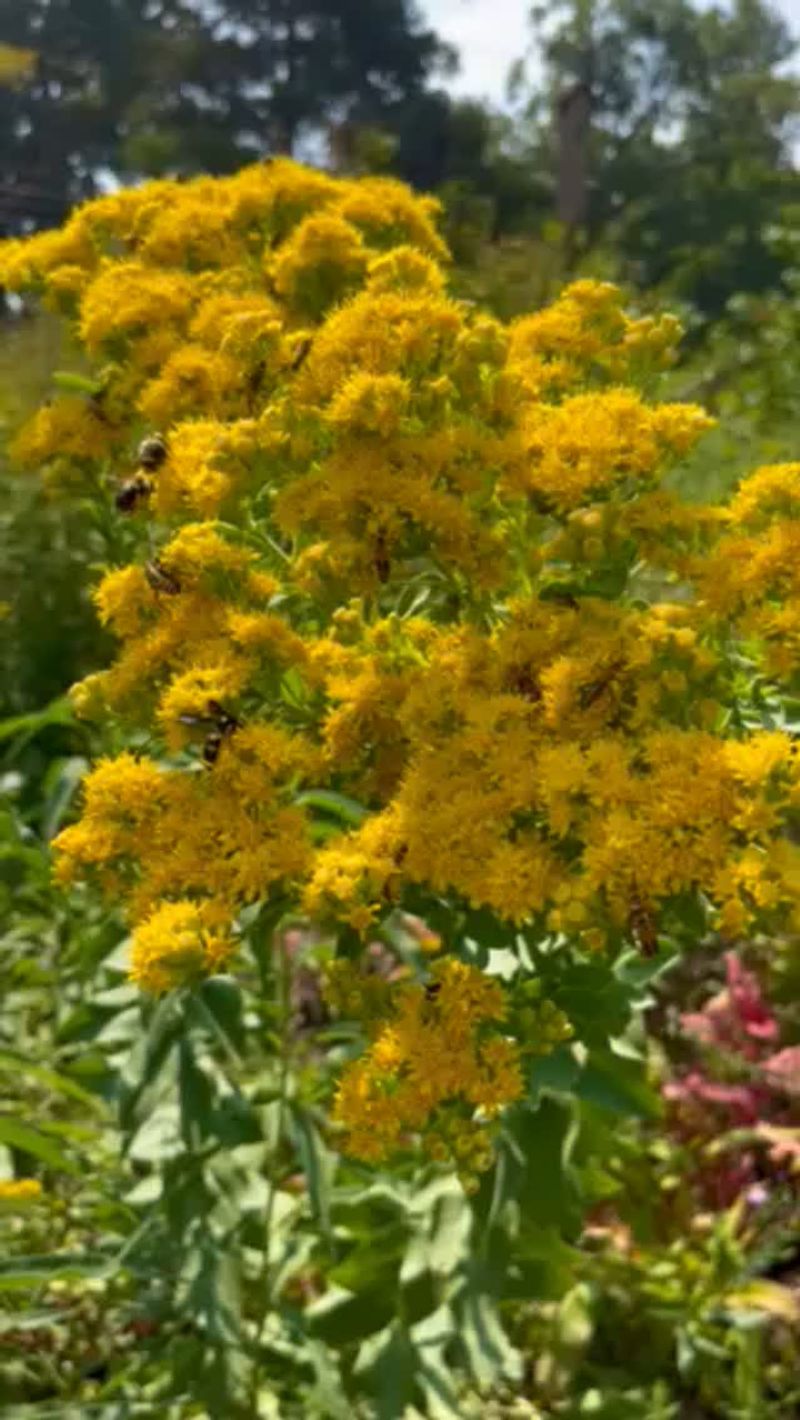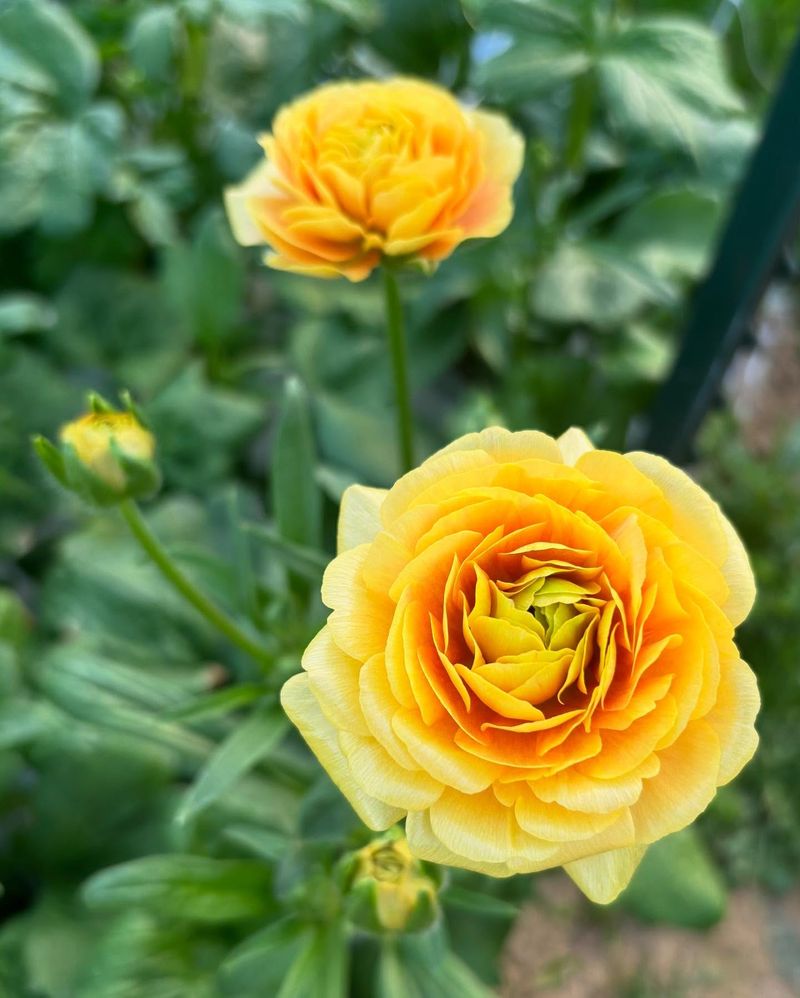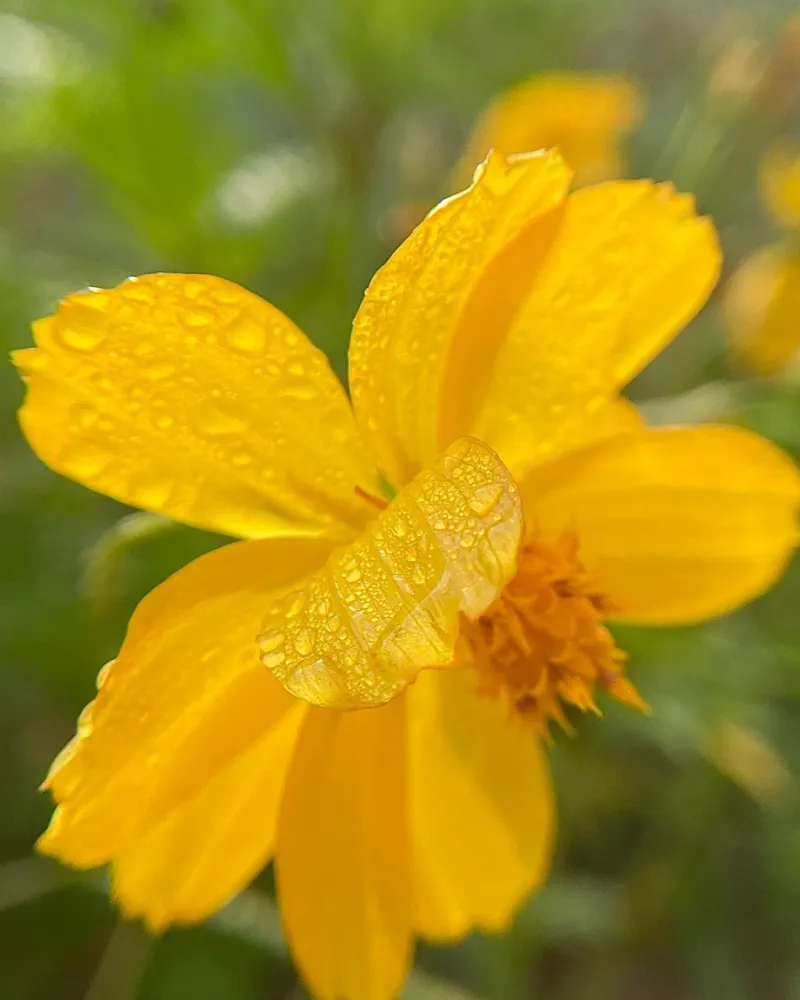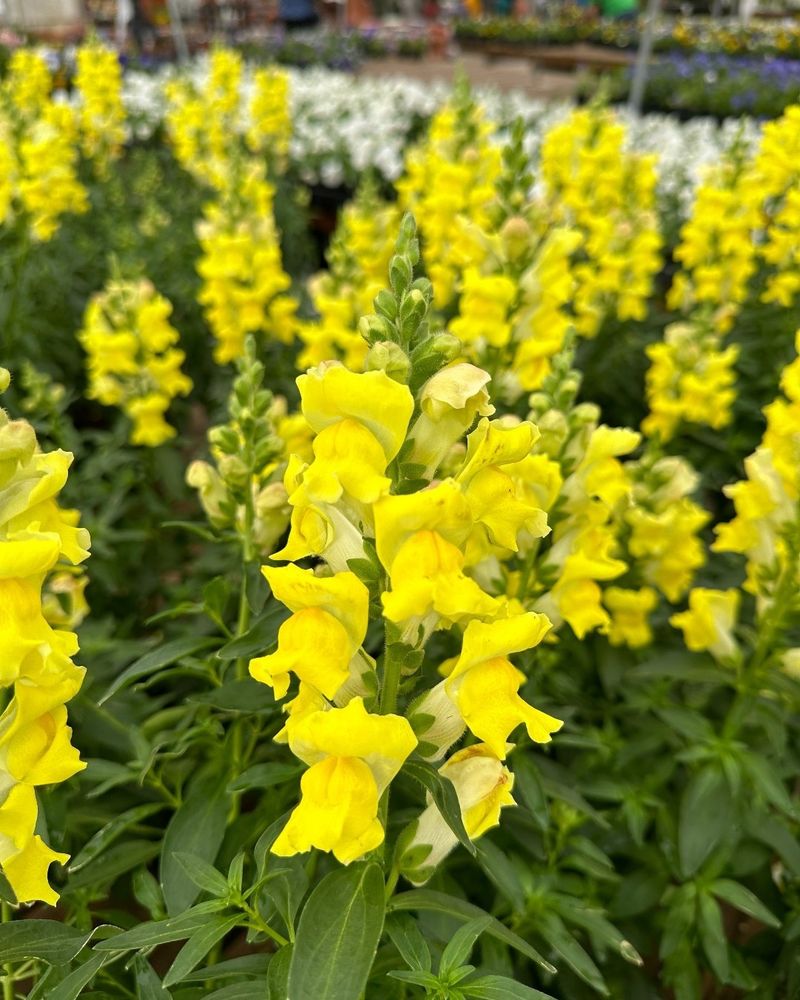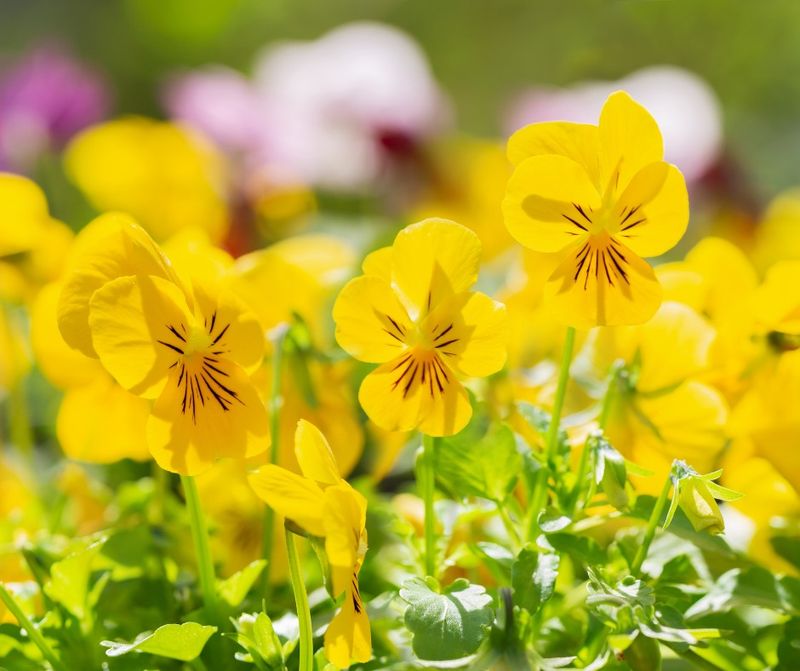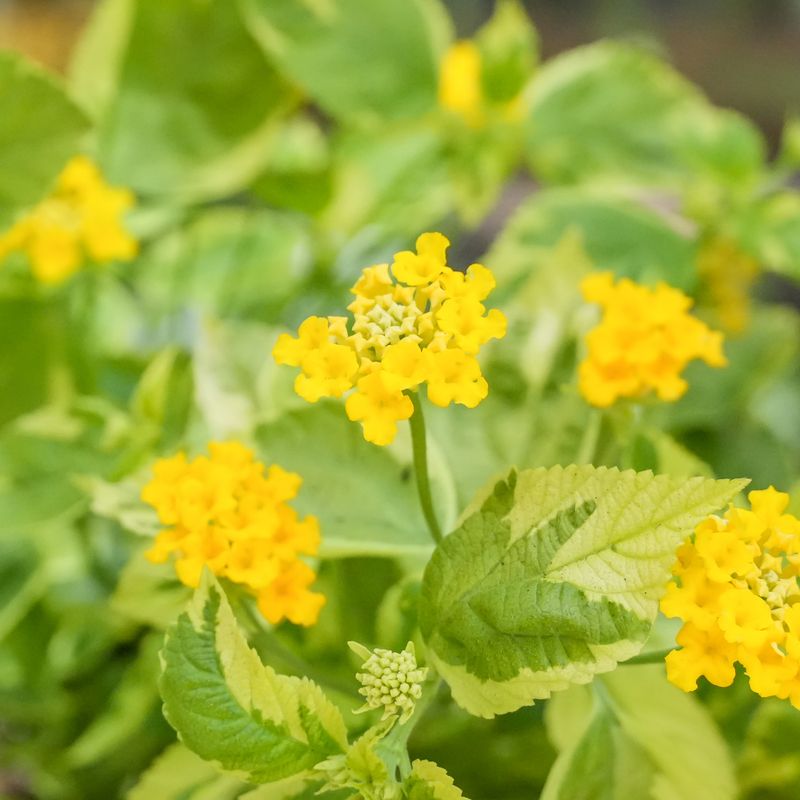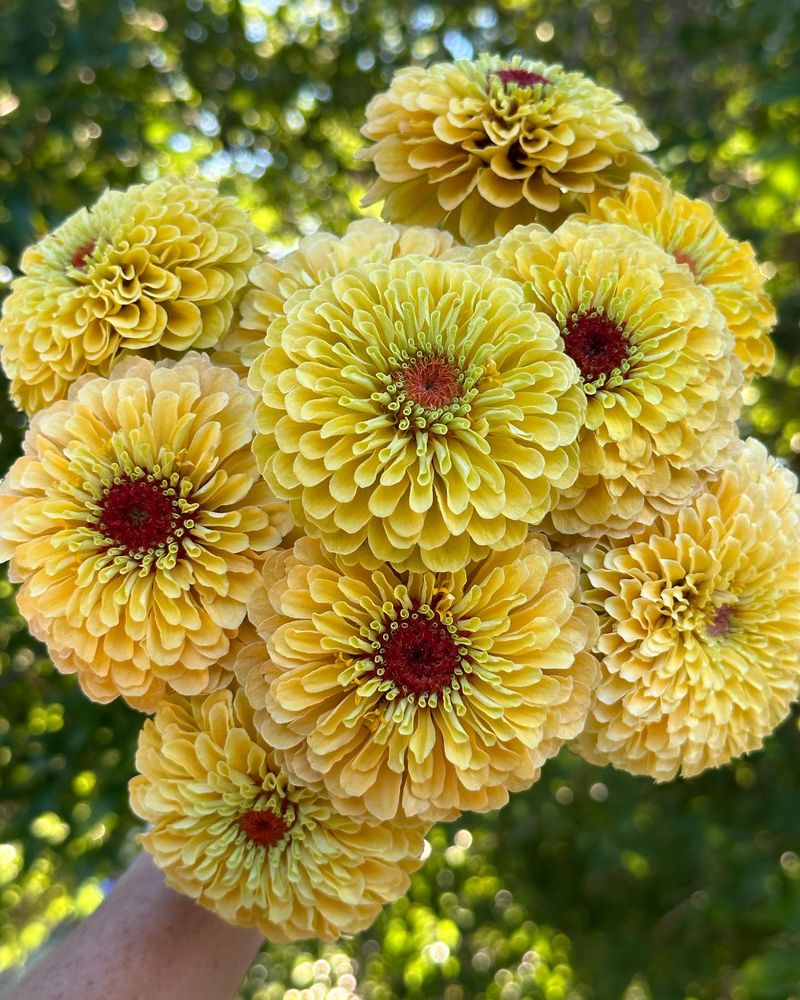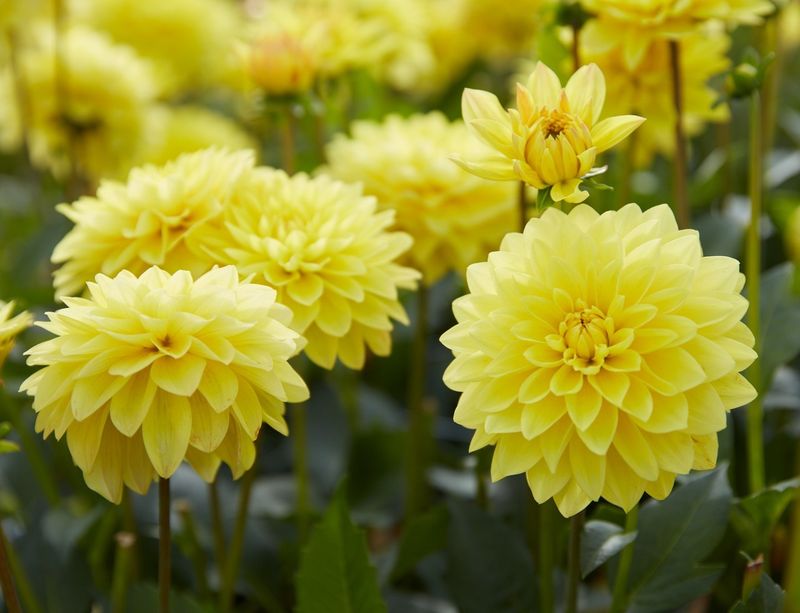Yellow flowers have a special way of brightening up a space—they’re like little bursts of sunshine, even when the sky is gray. I started adding them to my garden a few years ago, and now I can’t imagine it without their cheerful glow peeking through the greenery.
From sunny daffodils in early spring to golden rudbeckia in the heat of summer, there’s always a yellow bloom that fits the season. They pair so easily with purples, blues, and whites, creating color combos that feel joyful and balanced.
If you’re looking to lift the mood in your yard or just want something that always makes you smile, yellow flowers are a must. They’re simple, happy, and surprisingly versatile.
1. Sunflowers
Growing sunflowers requires full sun and well-draining soil. Plant seeds directly in the garden after the last frost, spacing them about 6 inches apart and 1 inch deep.
These iconic flowers range from dwarf varieties reaching just 2 feet to giants towering at 12 feet tall. Their large flower heads track the sun throughout the day when young, eventually facing east permanently.
I planted a row along my fence last summer, and they became neighborhood conversation starters. Children walking by would stop and point at these friendly-faced flowers that seemed to watch them pass.
2. Black-Eyed Susan
These regularly to encourage more flowers throughout their long summer-to-fall blooming season.
The daisy-like flowers feature golden-yellow petals surrounding a dark brown center cone. They form dense clumps reaching 2-3 feet tall and attract butterflies, bees, and other pollinators to the garden.
My grandmother always kept these in her cutting garden. The flowers last nearly a week in vases, making them perfect for bringing that outdoor sunshine inside during summer months.
3. Daffodils
Plant daffodil bulbs in fall, about 6 inches deep and 6 inches apart. They prefer well-draining soil and will multiply over years, creating larger and more impressive displays each spring.
These early bloomers signal winter’s end with their trumpet-shaped flowers in shades from pale lemon to deep gold. Most varieties stand 12-18 inches tall and naturalize beautifully in lawns and woodland gardens.
The squirrels and deer leave them alone completely—a rare gift in my garden where everything else seems to be on the menu for wildlife. Their cheerful faces popping up through late snow always lifts my spirits.
4. Coreopsis
Coreopsis needs minimal care—just full sun and occasional watering during dry spells. Trim back spent flowers to keep the blooms coming from early summer through fall.
The delicate, daisy-like flowers appear in abundance on bushy plants typically 1-2 feet tall. Some varieties feature single petals while others showcase double blooms that resemble small pom-poms.
After trying countless perennials in my hot, dry front yard, coreopsis was the clear winner. It handles heat waves without complaint and keeps flowering when other plants have given up for the season.
5. Marigolds
Start marigold seeds indoors 4-6 weeks before the last frost or direct-sow after danger of frost passes. These easy-growing annuals prefer full sun but adapt to partial shade in hot climates.
French marigolds stay compact at 6-12 inches while African varieties can reach 3 feet tall. Their pom-pom or daisy-like blooms range from pale yellow to deep gold and orange, offering continuous color until frost.
My vegetable garden always includes a border of marigolds. Their spicy scent seems to deter certain pests, and their reliable blooms keep the garden looking cheerful even when the vegetables are still developing.
6. Forsythia
Prune forsythia immediately after flowering finishes in spring. These shrubs bloom on old wood, so cutting them in fall or winter removes next year’s flower buds.
The arching branches become covered with small, four-petaled yellow blooms in earliest spring before leaves appear. Mature plants reach 8-10 feet tall and wide, creating dramatic golden fountains in the landscape.
The neighbor’s forsythia was my childhood signal that outdoor play season had officially begun. Now I have my own along the side yard, and that first burst of yellow still feels like nature’s permission slip to start garden season.
7. Yellow Tulips
Plant tulip bulbs in fall, about 6-8 inches deep in well-draining soil. Adding bulb fertilizer at planting time helps ensure strong blooms the following spring.
Yellow tulips come in many forms—from elegant single blooms to frilly parrot types and peony-flowered doubles. Most varieties stand 12-24 inches tall and make excellent cut flowers for spring bouquets.
Unlike some tulips that fade after a year or two, my yellow ‘Strong Gold’ tulips have returned reliably for five years now. I’ve planted them among forget-me-nots for a classic blue and yellow spring combination that never fails to impress.
8. Daylilies
These perform best when divided every 3-5 years as clumps become crowded. Each flower lasts just one day—hence the name—but established plants produce many buds for weeks of continuous blooming.
Yellow varieties range from pale lemon to golden amber on plants typically 1-3 feet tall. Their grass-like foliage forms attractive clumps that provide structure even when not in bloom.
The ‘Happy Returns’ daylilies in my side yard have survived complete neglect, hungry deer, and accidental weed whacker encounters. They keep coming back and blooming faithfully, making them the true survivors in my garden.
9. Yellow Roses
Prune yellow roses in early spring just as leaf buds begin to swell. Apply a balanced rose fertilizer monthly during the growing season to encourage abundant blooms and healthy growth.
From butter-yellow climbers to lemon-tinted tea roses, yellow varieties offer forms for every garden style. Many yellow roses feature a sweet fragrance that adds another sensory dimension to their garden presence.
The ‘Graham Thomas’ rose in my garden took three years to really get established, but now it’s a showstopper. Visitors always ask about the golden flowers that seem to glow from within, especially in evening light.
10. Canna Lilies
Start canna rhizomes indoors in early spring or plant directly in garden after frost danger passes. These tropical-looking plants appreciate rich soil, regular water, and monthly fertilizing during the growing season.
Yellow cannas feature broad, paddle-shaped leaves that sometimes show burgundy striping for added interest. The orchid-like flowers appear on tall stalks above the foliage, reaching heights of 3-6 feet depending on variety.
Last summer, I planted yellow cannas in large containers on my patio. Their dramatic size and tropical feel transformed the space into something that felt like a luxury resort—all from just three plants.
11. Goldenrod
Contrary to popular belief, goldenrod doesn’t cause hay fever—ragweed is the actual culprit. Plant these native perennials in average soil where they’ll have room to spread, as they can be vigorous growers.
Fluffy golden plumes appear in late summer through fall on plants reaching 2-5 feet tall. The flowers attract beneficial insects and provide important late-season nectar for butterflies and bees preparing for winter.
Adding goldenrod to my garden completely changed my fall landscape. When other plants are fading, these golden beauties are just hitting their stride, extending the garden season by nearly two months.
12. Ranunculus
Plant ranunculus corms in fall in mild winter areas or early spring in colder regions. The claw-like corms should be soaked overnight before planting to jump-start growth.
The rose-like flowers feature layer upon layer of delicate petals on stems 12-18 inches tall. Yellow varieties range from pale butter to rich egg-yolk hues that look stunning in bouquets and garden beds alike.
Growing ranunculus successfully made me feel like a garden wizard. The transformation from strange, spider-like corms to those perfect rose-like blooms seems like magic every time it happens in my garden.
13. Yellow Cosmos
Direct-sow cosmos seeds after frost danger passes or start indoors 4-6 weeks earlier. These annuals grow quickly and often self-seed, returning year after year in favorable conditions.
Airy, ferny foliage creates a delicate backdrop for the sunny, daisy-like flowers on plants reaching 2-3 feet tall. The yellow varieties like ‘Bright Lights’ and ‘Sunset’ bring a softer yellow tone to the garden palette.
The yellow cosmos in my cutting garden attract so many goldfinches that I sometimes feel like I’m growing bird food rather than flowers. The sight of these yellow birds on yellow flowers creates a double dose of sunshine.
14. Snapdragons
Start snapdragon seeds indoors 8-10 weeks before last frost for earlier blooms. These cool-season flowers perform best in spring and fall in hot-summer regions but bloom all summer in milder climates.
Spikes of dragon-mouth flowers rise 1-3 feet tall depending on variety. Yellow snapdragons range from pale cream to bright lemon, creating vertical accents in borders and excellent cut flowers for arrangements.
Teaching kids to gently squeeze snapdragon flowers to make the “dragons” open and close their mouths is one of my favorite garden activities. My yellow snapdragons near the patio are always the most visited plants when children come over.
15. Yellow Pansies
Plant these in early spring or fall for the best performance. These cool-season annuals struggle during summer heat but thrive when temperatures are mild.
The cheerful, face-like flowers come in solid yellow or with contrasting blotches that resemble whiskers or faces. Most varieties stay compact at 6-9 inches tall, making them perfect for borders, containers, and window boxes.
During a particularly cold spring, my yellow pansies were the only flowers brave enough to show their faces. Their resilience through several late frosts made me appreciate their cheerful presence even more.
16. Lantana
Treat lantana as an annual in cold regions or a perennial in zones 8-11. These heat-loving plants thrive in hot, dry conditions and bloom non-stop from spring until frost.
Clusters of small tubular flowers form rounded heads that butterflies find irresistible. Yellow varieties like ‘New Gold’ and ‘Samantha’ form mounds 1-3 feet tall and equally wide, creating excellent ground cover in sunny spots.
The lantana in my mailbox garden survives where nothing else will grow. Between reflected heat from the driveway and neglect on my part, it’s a harsh spot—yet these yellow flowers keep blooming reliably through the hottest days of summer.
17. Yellow Zinnias
Direct-sow zinnia seeds after frost danger passes, or start indoors 4-6 weeks earlier. These heat-loving annuals bloom quickly from seed and continue flowering until frost with regular deadheading.
Flower forms range from single daisies to complex cactus and dahlia types on plants 1-3 feet tall. Yellow zinnias in shades from pale lemon to deep gold attract butterflies and make excellent long-lasting cut flowers.
My garden journal shows that yellow zinnias have been part of my summer garden for 15 consecutive years. Their reliability, heat tolerance, and non-stop blooming make them an annual I’d never go without.
18. Yellow Dahlias
Plant dahlia tubers after soil warms in spring, about 4-6 inches deep. Staking taller varieties early prevents stem damage later when plants become top-heavy with blooms.
Yellow dahlias come in countless forms—from tiny pompoms to dinner-plate sized blooms up to 10 inches across. Plants typically reach 3-4 feet tall and produce flowers from midsummer until frost.
The ‘Kelvin Floodlight’ dahlia in my garden produces yellow blooms nearly the size of dinner plates. Friends often think I’m exaggerating until they see these massive flowers in person—their jaws literally drop at the impressive display.

